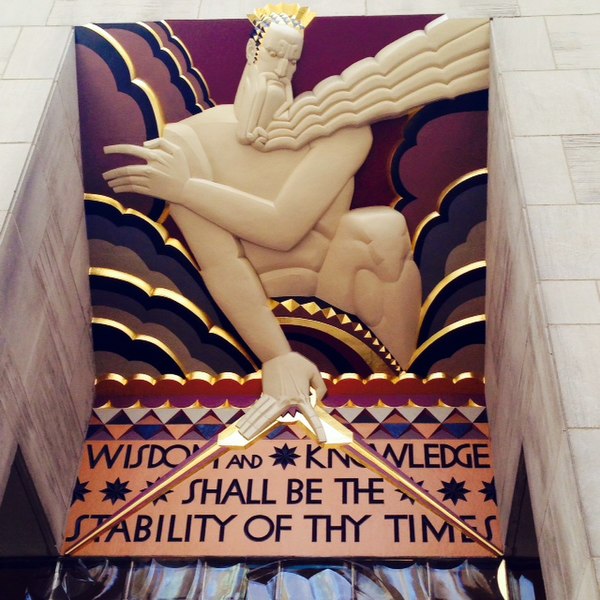Isaiah 66 is the sixty-sixth and final chapter of the Book of Isaiah in the Hebrew Bible or the Old Testament of the Christian Bible. This book contains the prophecies attributed to the prophet Isaiah, and is one of the Books of the Prophets. Chapters 56–66 are often referred to as Trito-Isaiah. This chapter contains an oracle delivered after the temple in Jerusalem had been re-built following the Jewish peoples' return from exile, and warns against "an unduly materialistic" approach to the worship of God.
The Great Isaiah Scroll, the best preserved of the biblical scrolls found at Qumran from the second century BC, contains all the verses in this chapter.
The Book of Isaiah is the first of the Latter Prophets in the Hebrew Bible and the first of the Major Prophets in the Christian Old Testament. It is identified by a superscription as the words of the 8th-century BCE prophet Isaiah ben Amoz, but there is evidence that much of it was composed during the Babylonian captivity and later. Johann Christoph Döderlein suggested in 1775 that the book contained the works of two prophets separated by more than a century, and Bernhard Duhm originated the view, held as a consensus through most of the 20th century, that the book comprises three separate collections of oracles: Proto-Isaiah, containing the words of the 8th-century BC prophet Isaiah; Deutero-Isaiah, or "the Book of Consolation",, the work of an anonymous 6th-century BCE author writing during the Exile; and Trito-Isaiah, composed after the return from Exile. Isaiah 1–33 promises judgment and restoration for Judah, Jerusalem and the nations, and chapters 34–66 presume that judgment has been pronounced and restoration follows soon. While few scholars today attribute the entire book, or even most of it, to one person, the book's essential unity has become a focus in more recent research.

Michelangelo (c. 1508–12), Isaiah, Vatican City: Sistine Chapel ceiling
Detail of entrance to 30 Rockefeller Plaza showing verse from Isaiah 33:6 Rockefeller Center, New York
The Isaiah scroll, the oldest surviving manuscript of Isaiah: found among the Dead Sea Scrolls and dating from about 150 to 100 BCE, it contains almost the whole Book of Isaiah and is substantially identical with the modern Masoretic text.
Isaiah 2:4 is taken as an unofficial mission statement by the United Nations. (Isaiah Wall in Ralph Bunche Park, a New York City park near UN headquarters.)




